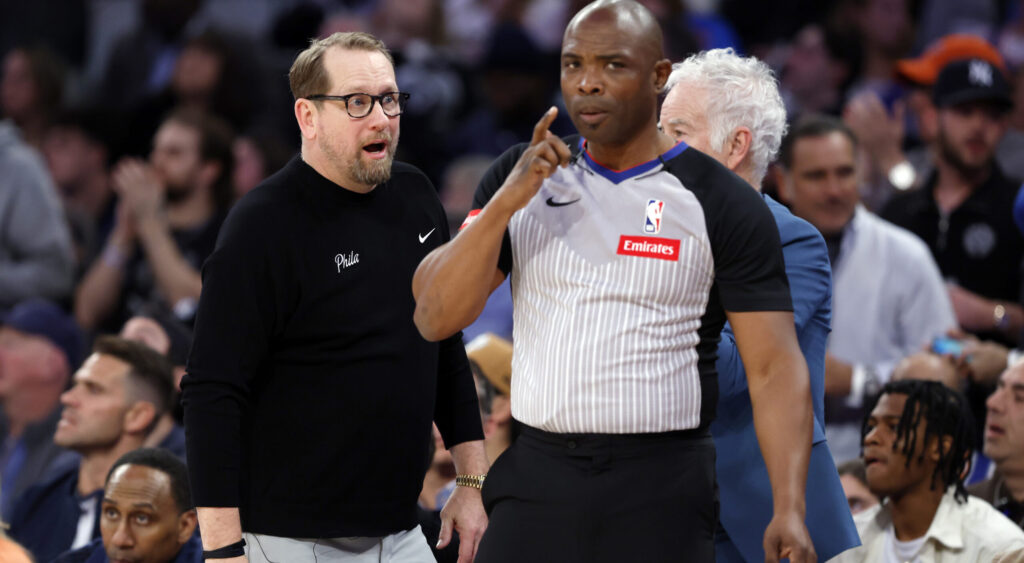
The timer was running out, and every second felt like a death bell for the Philadelphia 76ers inside the arena. Their head coach, Nick Nurse, stalked the sidelines with a frown carved between his brows. Their comfortable lead was down to just one point. With 27 seconds to go, tension was thicker than fog. This was supposed to be an easy victory for the Sixers. However, whatever happened in those last 27 seconds changed everything.
The play unfolded in a blur. With desperation driving them in every direction, the Knicks inbound the ball. A three-pointer through the net tied the game. Shaken, the 76ers mishandled the inbounds pass. A Knicks player, a hawk in human form, grabbed the lost ball and ran down the court. For the Sixers, time seemed to be moving slowly. On the sidelines, Nick Nurse witnessed everything. He needed a timeout, a chance to regroup, to strategize against the sudden onslaught.
Twice, Nurse called out a timeout, his hand raised high. But the referee, oblivious or unmoved, seemed to stare right through him. The Knicks made one last three-point shot before the buzzer, not caring that there was a whistle. The ball’s flight through the air answered a prayer. Nothing save the As the final whistle blew, a wave of people rushed to the floor. The Knicks had snatched a win right out of the jaws of defeat.
In the post-game press conference, the frustration was palpable. Nurse, fuming, recounted the final sequence. “I called timeout,” he stated, his voice laced with disbelief. “Referee looked right at me. Ignored me.” Feeling unheard and having a crucial strategic maneuver denied was a painful experience.
This wasn’t just about a missed call. It was about a coach’s control over the game—the ability to pause the chaos and formulate a response. The momentum irreversibly changed within those stolen seconds. The win, snatched away, left a sour taste in Nurse’s mouth.
When time isn’t on your side: Gaining insight through Nick Nurse case
Many coaches have faced similar situations before Nick Nurse. The last-second steal is a thrilling move, a risky play that has the potential to completely change the course of a game. Teams with little at stake frequently use this strategy, taking advantage of the team’s confidence in protecting a lead.
Click on ‘Follow Us’ and get notified of the most viral NBA stories via Google! Follow Us
But these steals are more than just blind luck. They require a combination of anticipation, quick reflexes, and a healthy dose of audacity. The defender must read the opponent’s play, predict the passing lane, and then explode into action when the opportunity arises.
There have been many famous last-second steals in history. Think about LeBron James‘ chase-down block on Andre Iguodala in the 2016 NBA Finals, a play that defied physics and shifted the series momentum. Consider Michael Jordan’s defensive masterclass against Craig Ehlo in 1989, which solidified his reputation as a clutch performer.
These iconic moments, forever etched in the annals of basketball history, serve as a powerful reminder that in the waning moments of a game, the array of possibilities knows no bounds. A perfectly executed steal has the power to completely change the course of the game, turning a seemingly inevitable loss into a thrilling victory. It can leave even the most composed coaches, like Nick Nurse, seething with frustration as they watch from the sidelines.
Also Read: “What Are We Doing?”: LeBron James Criticizes the Replay Center After Losing Against the Nuggets


